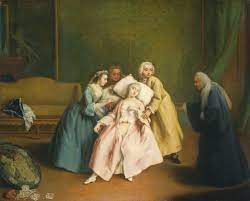
 Refers to the transient loss of consciousness accompanied by loss of postural tone.
Refers to the transient loss of consciousness accompanied by loss of postural tone.
Sudden transient loss of consciousness and associated with a spontaneous recovery.
It is defined as a self limited transient loss of consciousness and postural tone due to global cerebral hypoperfusion.
A transient loss of consciousness with spontaneous recovery due to a global reduction in cerebral perfusion.
Simple syncope is defined as syncope not accompanied by focal neurologic signs and symptoms.
Syncope accounts for 2-6% of all hospital admissions in the US with annual costs estimated to be $2.4 billion.
May be due to a serious or benign cause.
Accounts for 3% of primary care and emergency department visits.
Cardiac arrhythmias are common causes.
Cardiac syncope, including arrhythmias is a responsible approximately 10-20% of cases of syncope.
Cardiac syncope predicts at increased risk of death.
Arrhythmic syncope is common associated with near syncope or lightheadedness days or weeks prior to syncope.
Premonitory symptoms are the results short episode of the offending arrhythmia insufficient in duration to cause frank syncope.
Aortic stenosis and hypertrophic cardio myopathy he can result in syncope.
The most common causes of syncope are cardiac syncope, reflex syncope, and orthostatic hypotension.
Elderly more often to present with this process and to have higher rates of hospitalization and associated with a greater morbidity than younger individuals.
Unexplained falls in the elderly should be managed as potential syncope, especially if recurrent.
Older adults with syncope have approximately 3 1/2 times more chronic medical illnesses and are taking three times as many medications as the general population.
Changes in cardiovascular structure and function contribute to the incidence and prevalence of syncope in the elderly: impaired baroreceptor function, left ventricular dysfunction, and relative reduction of intravascular volume, and polypharmacy.
The annual incidence of syncope approaches 2% in patient’s age 80 years or older, and the prevalence increases with age.
The prevalence of syncope increases with age with more than 20% occurring at age greater than 75 years.
Older adults with syncope have a two-year mortality rate that averages about 30%.
History and physical examination can reveal diagnoses in almost 7 of 10 patients.
Guidelines for evaluation include, history and physical exam, postural blood pressure measurement, and an electrocardiogram.
Wide range of etiologies from benign to life threatening processes.
In cardiac syncope, there is marked production in cardiac output due to cardiopulmonary disease, such as arrhythmia, structural heart disease, or pulmonary embolism leading to decreased cerebral perfusion.
Cardiac syncope may occur at rest, in the supine position or during effort, as the patient is unable to increase cardiac output to meet demand.
Cardiac syncope may be preceded by shortness of breath, palpitations, or chest pain.
Cardiac syncope patients, upon awakening, may have persistent cardiac symptoms, abnormal heart rate or rhythm, abnormal cardiac exam, abnormal EKG, or abnormal serum troponin or BNP levels.
Reflex syncope is a centrally mediated reflex reduction in heart rate, systemic vascular resistance or both.
Occurs with sitting or standing.
Approximately 4% of cases attributable to cerebrovascular disease.
Studies suggest postural blood pressure measurements and EKG determine the etiology of a syncopal event in 21 and 3%, respectively.
Carotid ultrasound helps determine etiology of syncope in only 0.8% of cases.
Ultrasound neurovascular studies should be reserved for syncope patients with a history or clinical findings of cerebrovascular disease or who sustain focal neurologic findings at the time of syncope.
Simple syncope is not caused by occlusive cardiac carotid artery disease and therefore carotid duplex ultrasound is not recommended in the setting (Pires LA).
Studies using cardiac enzymes, EEG, brain CT and ultrasound of the carotid vessels seldom identify an etiology for the process.
18 month recurrence rate of syncope is 15%.
Mortality for primary and secondary syncope is 0.2% and 1.4% respectively.
Risk factors for mortality in primary syncope are hypertension and metastatic neoplasms.
Hospitalization reasons include: evaluation for potential conditions that cannot be evaluated outside the hospital, intervention to treat the problem that only can occur in the hospital to treat recurrent syncope and evaluation and treatment of potentially life-threatening associatd problems and monitoring and assessment with the concern that the individual may be at imminent risk for sudden cardiac death or recurrent syncope.
Patients who present with syncope to emergency departments are often hospitalized.
Roughly 1% of emergency department visits are for syncope and 1/4 to 1/3 of such patients are admitted to the hospital.
Among patients with syncope related hospital admission a new diagnosis is rarely made.
Primary symcope in hospitalized patients include: hypokalemia, ventricular tachycardia, atrial fibrillation,dehydration, and hyponatremia.
Evaluation strategies for hospitalized syncope patients are expensive and lack diagnostic value.
Among patients admitted to the hospital for syncope, greater than 40% of cases the cause is undetermined.
The most common evaluations for primary syncope includes echocardiogram, electroencephalogram, coronary angiogram, and electrophysiology studies.
For primary syncope hospital admissions incidence of diagnosing ventricular tachycardia, paroxysmal supraventricular tachycardia and electrolyte abnormalities are increasing, while seizures and dehydration are decreasing and the newly diagnosis of atrial fibrillation and suspected bradyarrhythmias.
Vertebrobasilar disease is a rare cause of syncope and is usually associated with a focal neurologic deficit.
